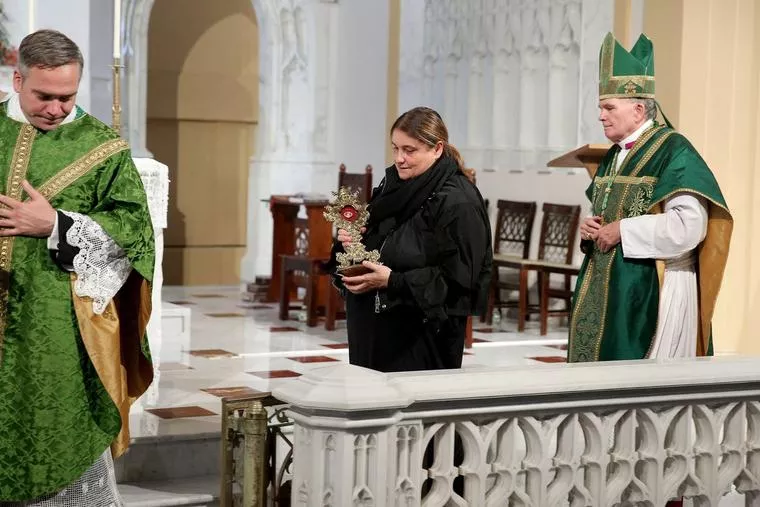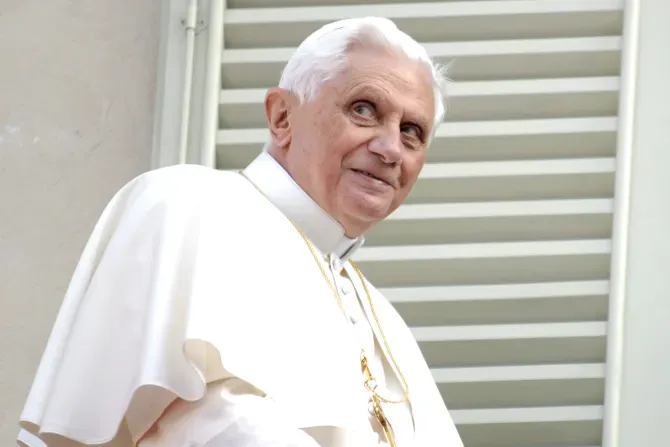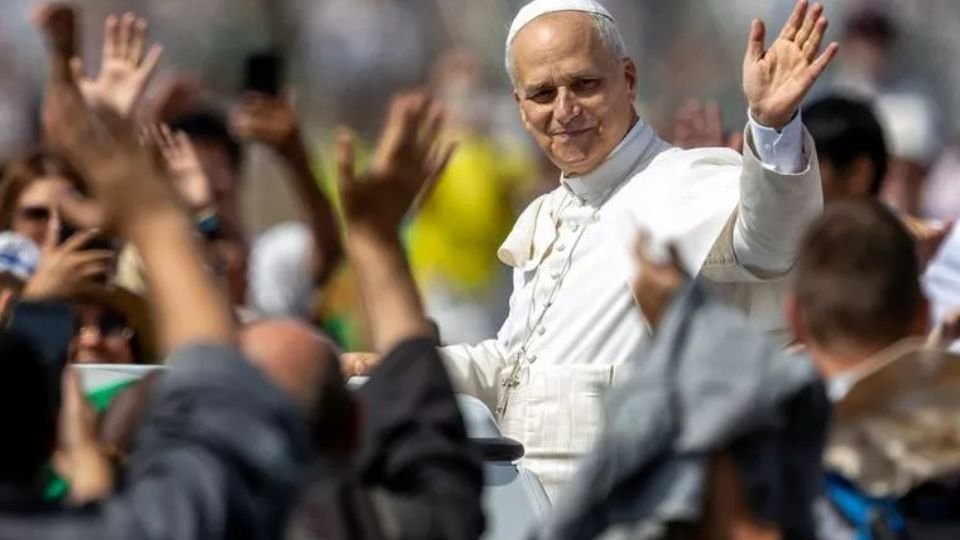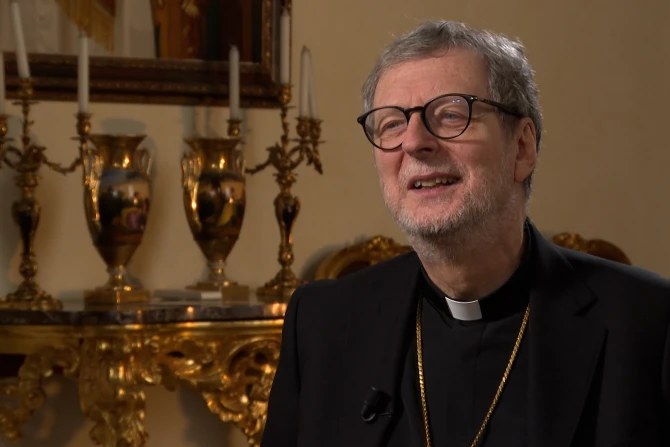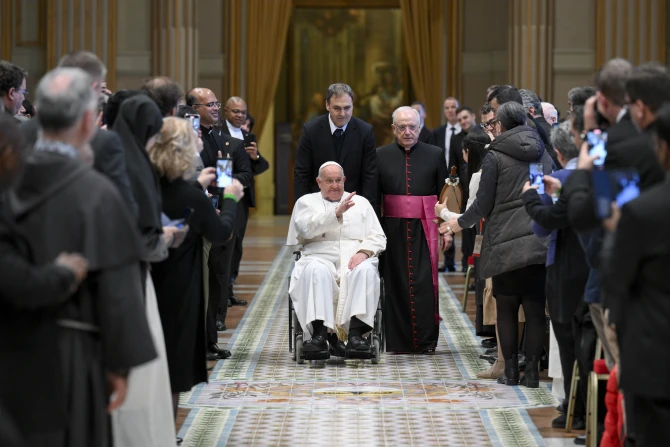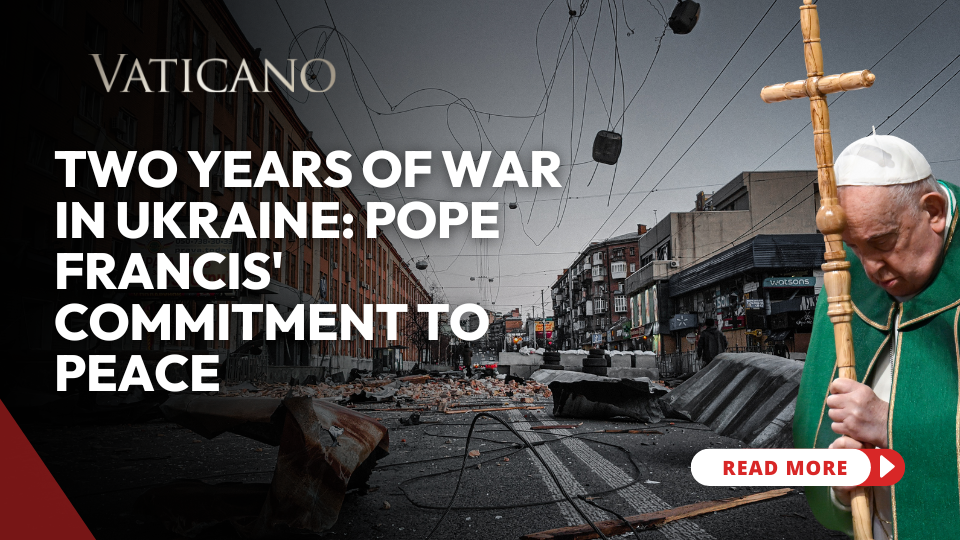‘Both Carlo and Pier Giorgio [Frassati] shared a love for the Eucharist, a love for the poor, and a love for the Virgin Mary… These two are models that we need in this particular moment for the young people of today…’
SIGN UP FOR OUR NEWSLETTER HERE
Antonia Acutis, the mother of soon-to-be-saint Carlo Acutis, the first millennial saint, spoke with the Register on Aug. 20 about her son’s holiness and vocational dream, plus other topics, such as his common witness (including their prayer lives, serving the poor and shared love of math) with Blessed Pier Giorgio Frassati, who will be canonized alongside Carlo on Sept. 7. “The two of them filled themselves up with Christ,” Antonia said.
What is the significance of the double canonization of your son Carlo and Pier Giorgio Frassati?
I don’t think that anything in life is random, in the sense that God moves things himself.
Pier Giorgio Frassati was a young man who lived many years before Carlo and died at the age of 24. He died because he was helping the poor and caught fulminant poliomyelitis [polio]. Carlo died of leukemia. He was also visiting the poor and sick during his lifetime, especially people who lived on the streets. Therefore, love for the poor was surely a similarity between Carlo and Pier Giorgio. They were both from wealthy families, but they were concerned about the poor.
Carlo, like Pier Giorgio, had a great love for the Eucharist. Pier Giorgio did not have a very devout family. His mother was religious, but not like Pier Giorgio. He went to Mass and Eucharistic adoration every day. During the summertime, Pier Giorgio used to go to daily Mass by sneaking out the window. There was only one Mass early in the morning, and he would lower himself down from the window using a bed sheet so as not to make any noise to wake up his parents.
Both Carlo and Pier Giorgio shared a love for the Eucharist, a love for the poor, and a love for the Virgin Mary. I think that these two are models that we need in this particular moment for the young people of today.
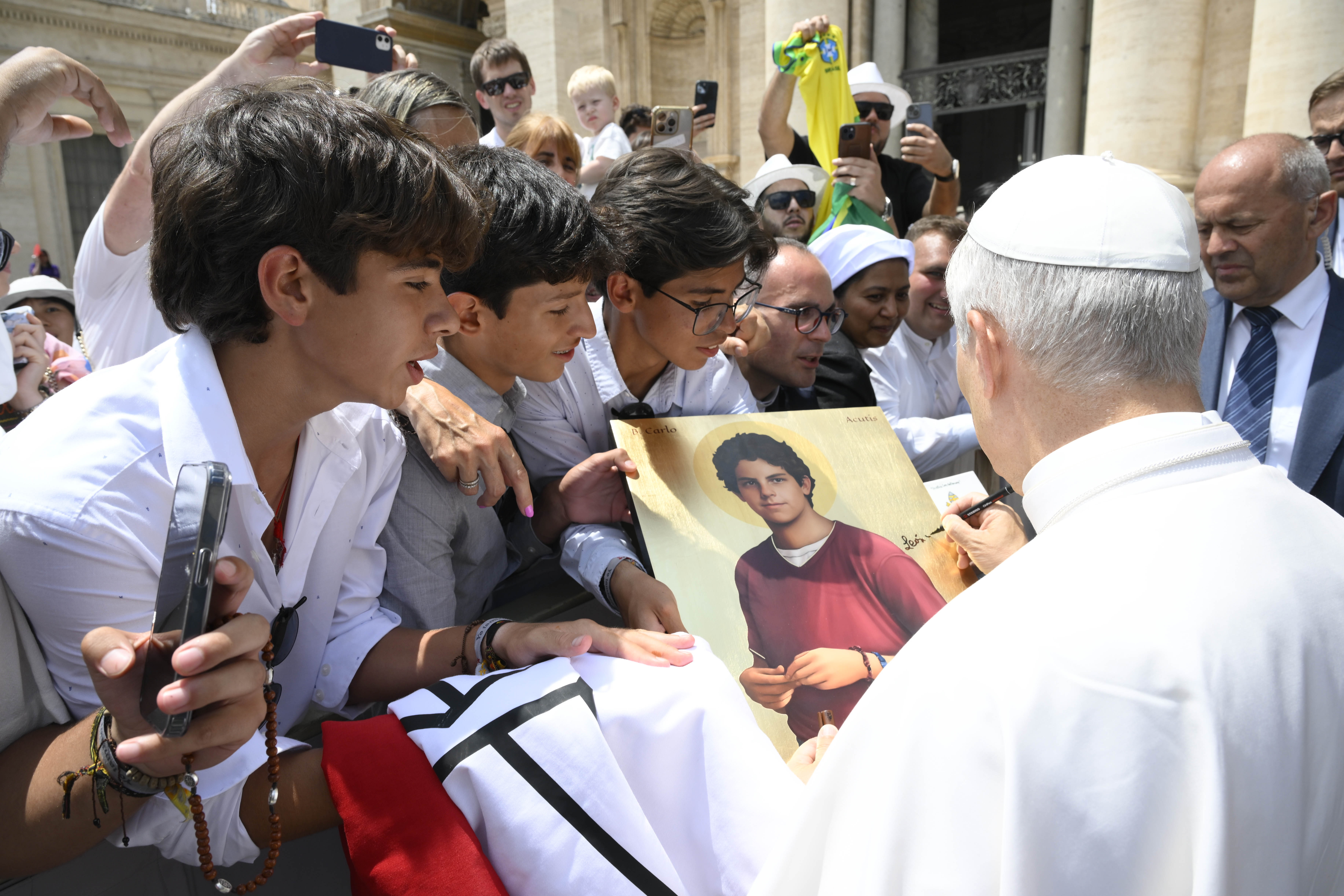
How were they Christian witnesses during their lifetime?
Pier Giorgio would say, “Dobbiamo vivere, non vivacchiare,” which means, “We need to live, not just scrape by.” This is a beautiful phrase.
Carlo and Pier Giorgio are similar figures: They put Mass in the center, Eucharistic adoration, assistance to others — and, above all, the announcement of the Gospel.
Pier Giorgio had an apostolate for others: to his friends in the university and to the poor. Carlo’s apostolate was through the internet with his exhibit on Eucharistic miracles that has toured the world. This exhibit is converting many people and helping many souls.
They responded to Christ’s call to go and announce the Good News to all the people: first by giving witness in their personal lives and by becoming evangelizers in the place where they lived.
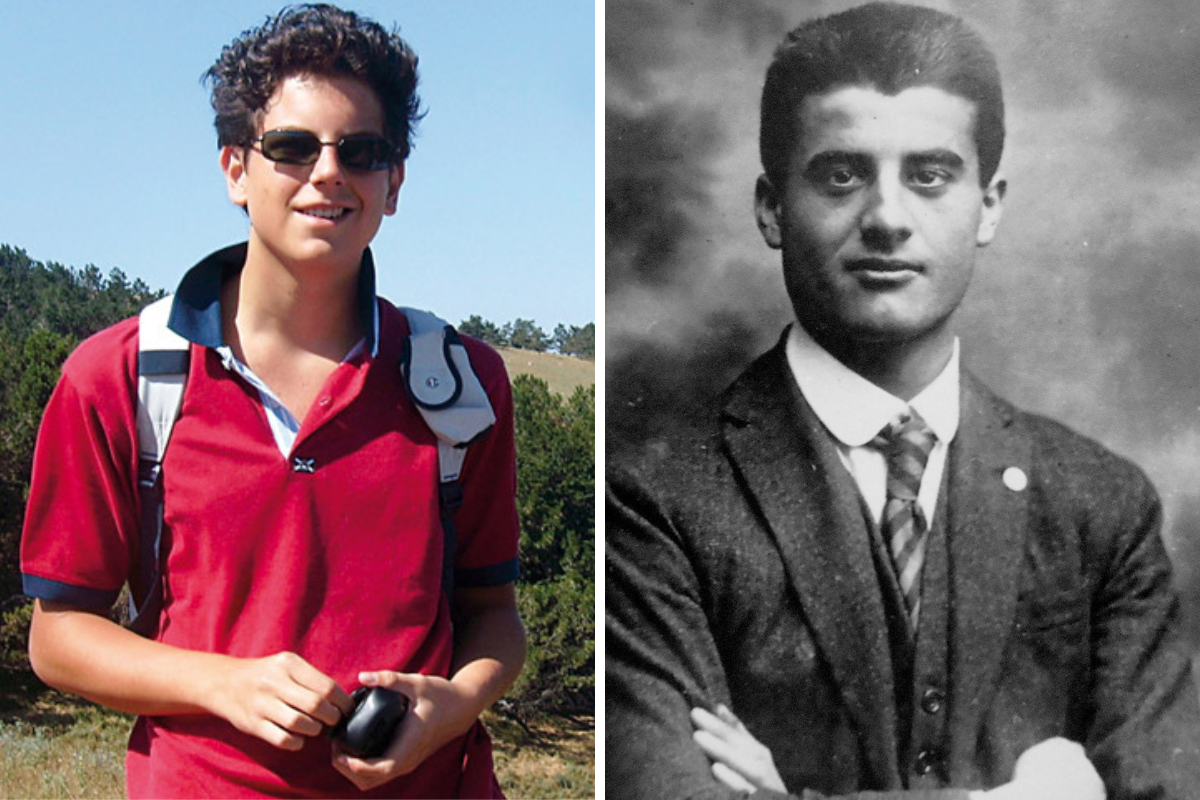
Both Carlo and Pier Giorgio had many friends. They were people with whom others had fun and laughed with. Do you think that holiness is something that expands our capacity for friendship?
Surely, the more we are united to Christ and the more we have charity, the more we are attractive. The two of them filled themselves up with Christ. They were both really fun, brilliant and full of life. Pier Giorgio loved hiking in the mountains. He would climb the peaks.
Of course, Pier Giorgio had some defects, like all of us. Carlo also had some defects. He loved Coca-Cola and Nutella! Each of them had their limits because to be a saint is not to be superhuman. What made them different was that they were both human beings who fought against their own defects. They were able to live heroic virtues.
So perhaps a new lesson we can learn from Carlo and Pier Giorgio is that happiness is not opposed to holiness? And maybe it is a direct result of it?
In the past, there may have been an exaggeration in the iconographies of saints. When you saw pictures of saints, they seemed to be melancholic and have sad faces. It seemed that to be holy, you could not be happy.
But I know that Padro Pio used to tell jokes. He could be very funny. St. Philip Neri was always joking around. Saints are not robots.
Some saints experience supernatural things like apparitions. How are these things connected to holiness?
Often, in the collective imagination, holiness seems to be attached to apparitions, visions or the stigmata. This is wrong because these things are graces that God gives gratuitously, which do not depend on anyone’s merits. It is God who gives them.
Extraordinary gifts can, at times, be a limitation. St. Ignatius of Loyola said, at the end of his life, that he would have preferred not to have had these mystical gifts because they took away from his merits. Therefore, we should not fixate ourselves on this.
Holiness is in the ordinary; bringing the extraordinary into the ordinary. This is what Carlo and Pier Giorgio did.

Carlo often spoke about the spiritual battle we must wage within. Can you explain this?
The merit of the person is when they love God and neighbor. This is holiness. It is trying to live your life with heroic virtue.
Heroic virtue is the stable attitude of the will towards the good. This means not committing venial sins voluntarily. The world is full of mediocre Christians who are not engaging in a good spiritual battle. As Carlo used to say: “What is the point in winning a million battles if you can’t win in the battle against yourself and your own corrupt passions?” …
I have to win this battle. How? With a virtuous life. With what means? God has given me the means in abundance: first of all, the sacraments through which he gives me the grace to sanctify myself and to grow in holiness and, above all, to purify me. Then we have prayer and the Rosary, through which God gives us many graces. Our Blessed Mother has promised many graces through the Rosary at Fatima and Lourdes. Then we have God’s word, which is a compass.
St. John Bosco, to help convert prostitutes, used to recite the Psalms under their windows. Many of them converted because of this. Let’s remember that, during exorcisms, it is the Word of God which is used.
Therefore, God gives us all of these means. Holiness consists in using all of them.
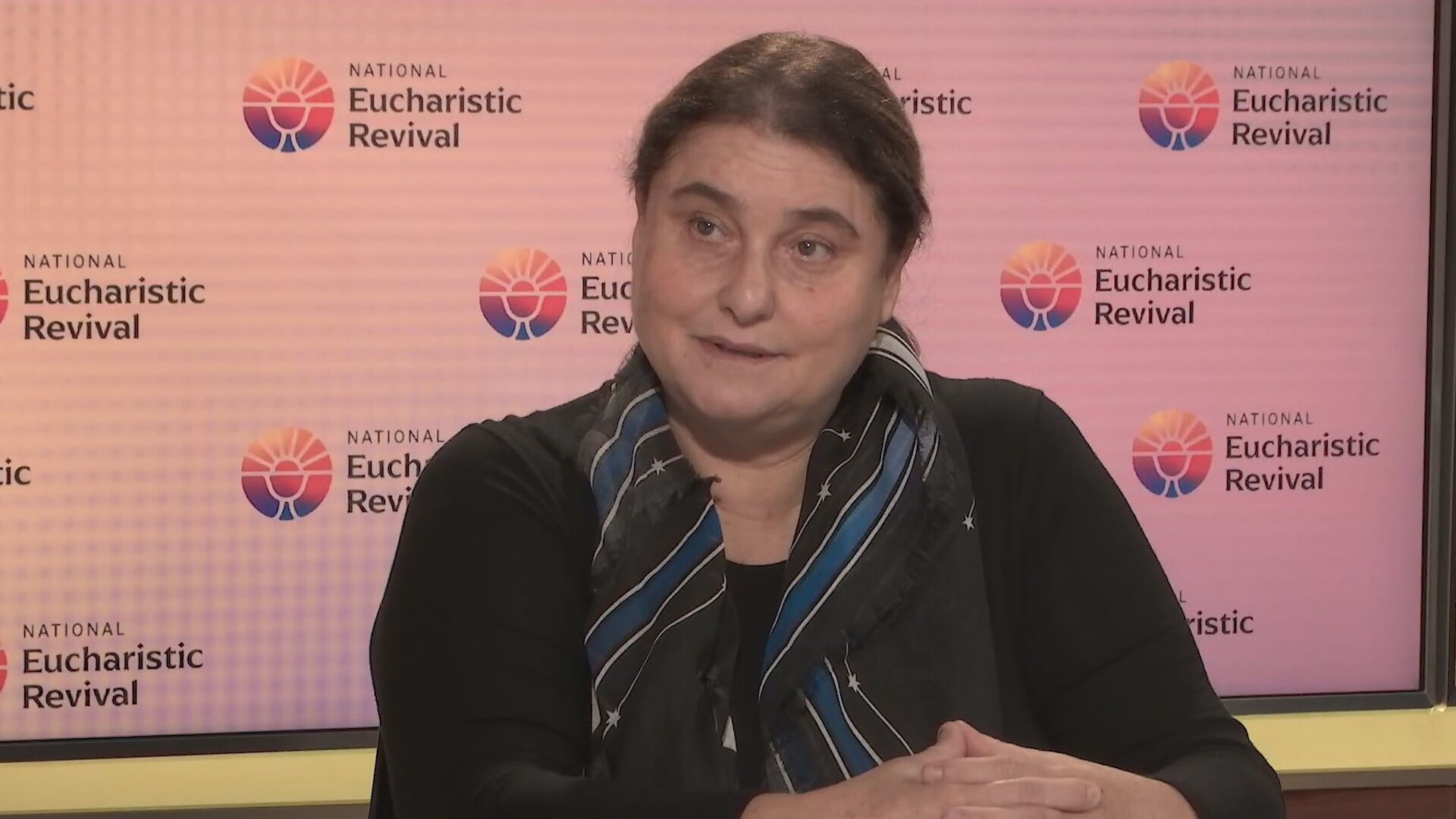
Another similarity between Carlo and Pier Giorgio is that both were good at math. Pier Giorgio studied engineering. Pope Leo XIV got his university degree in math. What is the connection between the Catholic faith and the world of math and science?
Science is at our disposition. God gave us many gifts of intelligence to discover the magnificence of creation, which he knows well because he made it. Math is one of the sciences that permits us to arrive at many things. It should not, of course, become an idol. Pier Giorgio had this aptitude [for math]. Carlo had a gift for computer programing because he was a computer genius. He used C++ and Java at the age of 9, when he was already reading computer-programming textbooks that we would buy from the Polytechnical University of Milan. He would create statistical programs for his dad, who was an insurer. It was something incredible. But he would use his programming skills, above all, to evangelize.
Besides computer programming, what were Carlo’s dreams for the future?
He was thinking about becoming a priest. Before he died, he asked me what I thought about this idea. He also asked his grandmother. I believe that that was his intention. Also, he wanted to become a catechist. This thing came from him spontaneously. Surely, he had a call.
Many young people today have left the Catholic faith, even if they were brought up within Catholic families. Why is this happening?
Sister Lucia from Fatima said that the final battle of the devil would be against families and against priests. You need to only look at how many people have left their religious orders or look at families and see how many divorces and separations have taken place. The family is not the place anymore where the faith is nurtured and grown. The majority of Catholic families seem to have given up on the attempt to pass on the faith altogether.
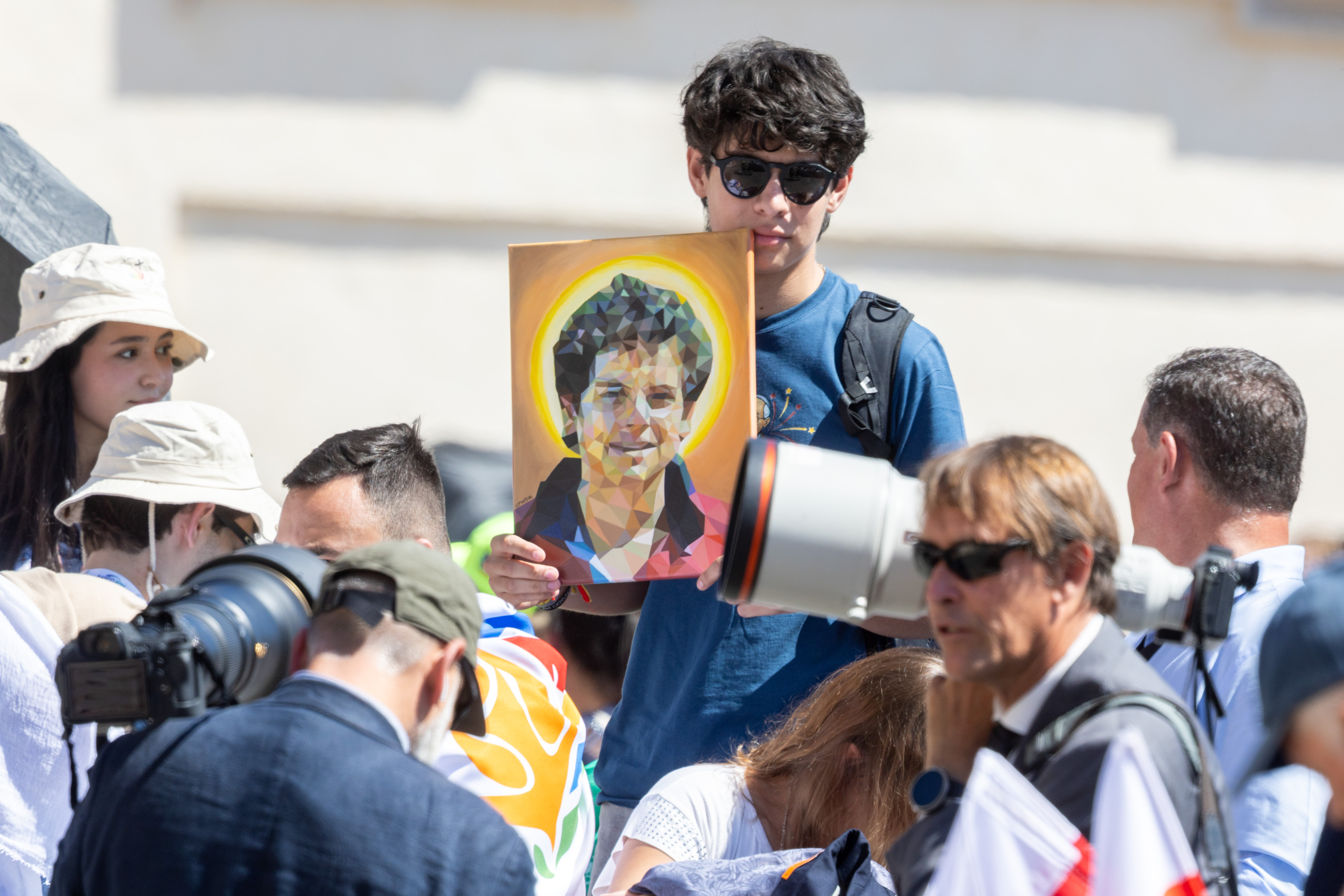
Then there is the danger of pornography. This is enormous. Parents leave their children in front of screens: smartphones and computers. Girls and boys go on these sites and nobody controls them. There are no brakes. … This is happening around the world. We can imagine the evil that this is producing in the minds of kids. It ruins them in their emotional life. This is dangerous and parents are not protecting their kids. There are some parents who do put limits and controls. But there needs to be greater control on the part of parents. They can’t be superficial about these issues.
What can the example of Carlo and Pier Giorgio do?
When these kids learn about someone like Carlo or Pier Giorgio, it makes them reflect. Carlo’s exhibit has touched the lives of people around the world. You see that a Eucharistic Host is transformed into flesh. This is something that moves people deeply. Therefore, the things that Carlo did are bringing a great deal of fruit. There are prayer groups to Carlo around the world. This is of course for young people who have a spiritual life. However, even a nonbeliever can read about this exhibit and maybe become curious and start to think. Maybe it plants an invisible seed, and, slowly, it makes it way through the brambles. Maybe a flower will blossom. That is my hope.
How will you live this moment surrounding the canonization of your son Carlo?
This is the crowning moment of a long journey. That Carlo is a saint, we are sure. It is the Church that will officially declare it. The devotees of Carlo are happy. After this, they can name churches after Carlo. It can only be done after canonization. What counts is what Carlo has already been doing from heaven, especially in answering prayers for conversions, which are the most important gifts because this is what counts for eternal life.
This article was originally published by NCRegister.

